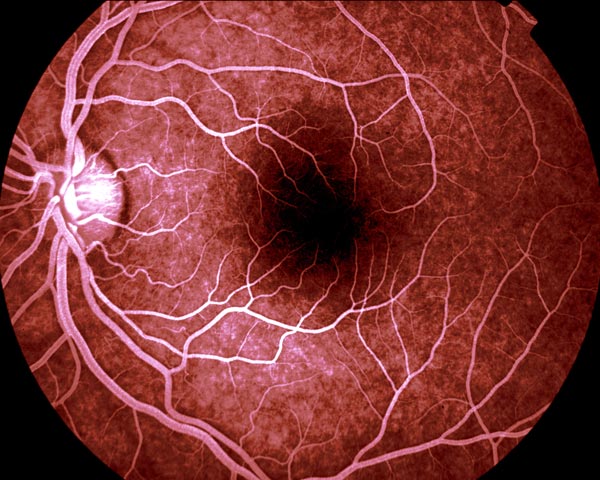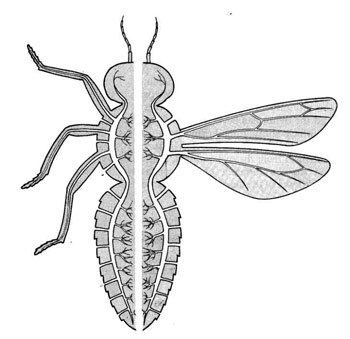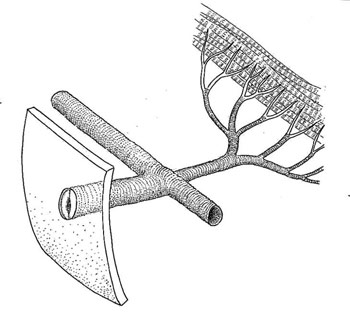Fractal Blood Vessels Human retina. Image courtesy of Paul van der Meer.
There are many more examples of fractal branching patterns in our bodies, and blood vessels are one of the most impressive examples.
Every cell in the body must be close to a blood vessel (within about 100 microns) in order to receive oxygen and nutrients.
The only way this is possible is through a fractal branching network where blood vessels branch and branch ever smaller, down to the width of a
capillary, which is about 8 microns in diameter.
Depending on how they're measured, humans have about 150,000 kilometers of blood vessels -
enough to go around the world several times! (Remember, most of these are microscopically tiny capillaries.)
According to one study, there are about 250 capillaries/mm3 of body tissue.REF
And according to another study, the average length of a capillary is about ~600 microns, just over half a millimeter.REF
Insects have a very different respiratory and circulatory system than mammals. Because of their much smaller size, they have a much larger surface area to volume ratio than bigger animals.
This allows them to take in oxygen passively through small holes in their bodies called spiracles which branch out into their body tissues, and
eliminates the need for lungs to drive the respiration process. Their passive respiratory system helps put an upper limit on the size of
insectsREF, and explains why (except in horror moviesREF) we don't see giant insects the size of cats or dogs! |
|
<- PREVIOUS NEXT -> © Fractal Foundation. |

